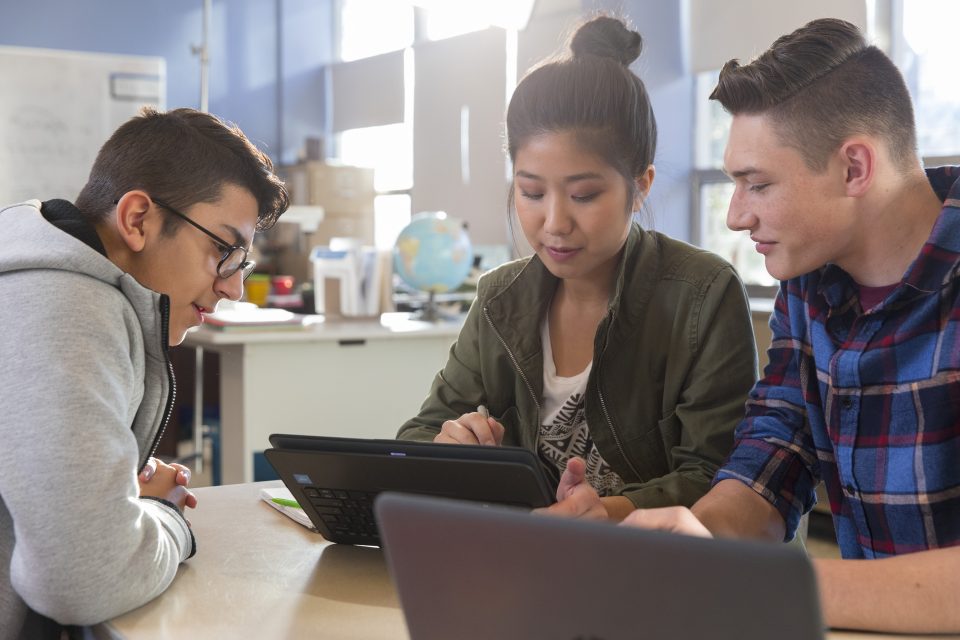This article was first published in Newsroom.co.nz on 27 August 2018.
 By Anne Taylor, Education Manager, Microsoft New Zealand
By Anne Taylor, Education Manager, Microsoft New Zealand
Commercial space pilot, earthquake forecaster, memory surgeon. Welcome to the world of 2030.
Although no one can accurately predict what the future will look like, we know Kiwi children entering education this year need to be prepared for jobs that have not yet been created, technologies that have not yet been invented, and to solve problems that have not yet been anticipated.
Franklin D. Roosevelt said: “We cannot always build a future for our youth, but we can build our youth for the future”. Students, their view of the world and the way they learn, create and share have already changed. The skills they’ll need to succeed in tomorrow’s jobs have also evolved from where they were even five years ago. Consequently, education around the world is digitally transforming. It’s crucial our education system is equipped to reach today’s students and prepare them for the future world of work, lest New Zealand fall behind.
As it stands, young learners are failing to emerge from traditional schooling with the future-ready skills needed for a digitally driven workplace. Tertiary institutions are struggling to ensure their subject content remains relevant in an employment market undergoing widespread disruption. The flow-on effect is that employers are now challenged to find people with the digital, social and emotional skills needed to succeed today, let alone tomorrow. We only have to look at the growing digital skills shortage in New Zealand to see the very real threat of this to the broader economy.
Everyone agrees that technology is of paramount importance, but it’s not enough just to teach students how to use particular software or specific devices. The world has moved on from repetitive ‘skills and drills’. Creativity, problem-solving, resilience and communication are just some of the attributes students will need to navigate the fast-changing workplace, as well as the digital world outside, so the way we use technology in the classroom needs a truly considered, holistic approach.
We need to shift the question from, “Does technology improve learning?” to, “How can we employ technology effectively to improve learning?” It’s encouraging to see the Government responding to this question, revamping the education sector from primary to graduate-level, to ensure technology is meaningfully integrated across the entire curriculum, from physics to performing arts.
Microsoft has signed a new technology agreement with the Ministry of Education, providing every state and integrated school in New Zealand access to our learning and collaboration tools. If we’re to provide all students and teachers equal access to world-leading technology across the country, on any device, at home and at school, such agreements help pave the way.
“We may not be able to see tomorrow’s world, but we have the map. With the right approach to education, we’ll not only survive the journey, we’ll thrive when we get there.”
Without skilled teachers, however, the digital-ready curriculum cannot be fully implemented. We need to provide opportunities for our teachers to learn how to use digital tools and gain the confidence (and ability) to use these tools in creative ways that make engaging with students easier and more rewarding for everyone. I am always inspired by the passion our teachers have, and how they are embracing technology to enhance their learning environment, by learning alongside their students.
One of the barriers to rolling out technology across the curriculum is that teachers feel they have no time to learn new skills or they fear being less knowledgeable than their students. In today’s classroom, with the internet providing so much more access to information than at any other time in history, it’s impossible for the teacher to be the fount of all knowledge. But that’s okay. Through digital technology, support and advice are just a click of a mouse away, and modern pedagogy is very much about learning techniques rather than facts. If we want our students to learn adaptability and be creative in unfamiliar environments, teachers must be prepared to lead the way, learning alongside them and modelling the commitment to “being a lifelong learner”. This makes it a very exciting time to be a teacher.
Age is irrelevant when it comes to learning new skills. I recall a 70-year-old English teacher who had never used technology in her 50-plus years of teaching. When she was introduced to Microsoft OneNote for her teacher appraisal, she loved the experience so much that she started using it with her students.
Technology also has the power to provide better access for the 1 billion students worldwide with disabilities. From voice recognition technology to touch screens, smart games controllers for those with cerebral palsy and many more tools, there are opportunities for every student to receive an equal education. The more platforms, educational games and tools New Zealand’s innovators create, the more chance we have of reaching students of all abilities in ways teachers simply weren’t able to before. As many teachers tell me, sometimes all it takes is a new way of communicating.
No matter whether our students of today become tomorrow’s digital heart surgeons or print 3D burgers from lab-cultured chicken, a future-focused education system means learning has no limits. By focusing on how technology is used and not just on learning the tools themselves, as well as giving teachers more opportunities to network and mentor one another, we can build the real foundations of a tech-driven world. One where teachers have more time to teach, students are more resilient and adaptable in their work lives, and everyone can participate fully in the coming digital society.
We may not be able to see tomorrow’s world, but we have the map. With the right approach to education, we’ll not only survive the journey, we’ll thrive when we get there.





